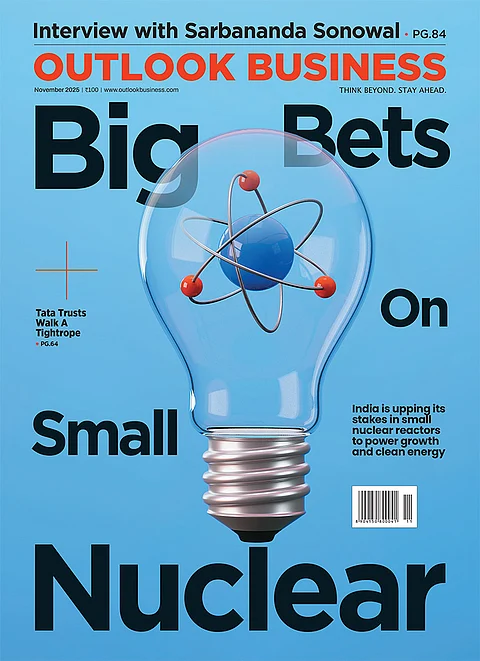Facebook founder Mark Zuckerberg’s famous motto - Move fast and break things - is plastered on the walls of Paytm’s office in Noida. Abiding by the adage, Paytm has moved from a mobile recharge and utility payments provider to the country’s largest mobile commerce platform in its own words. After being valued at $2.8 billion in its last funding round, Paytm has now set its eyes on becoming a payments bank, with 500 million users by 2020. It sure has moved fast, but the question now is can it break things? Or rather can it along with other payments banks wrest market share from the incumbents?
The incumbents, judging by their comments, are wary. State Bank of India chief Arundhati Bhattacharya was among the first to express concern about payments banks. A day after the Reserve Bank of India awarded the licences, she said that the move would unleash a rate war and these banks would wean away low-cost CASA deposits by offering higher interest rates. The RBI has granted licences to 11 firms to set up payments banks to speed up the financial inclusion process. The idea is to allow entities to come up with technology-oriented solutions that can cater to the under-banked and unbanked segments in both rural and urban areas.
But Bhattacharya may have over-estimated the competition. “Given the limited services that payments banks are allowed to offer, they will miss the two most important benefits of running a banking franchise —-- low cost of funds through large sticky customer deposits and the ability to lend money at a rate commensurate with the risk taken,” says Suruchi Jain, equity analyst, Morningstar India. Payments banks can only accept deposits up to Rs.100,000 per customer. To fight it out with legacy banks, they would need to offer higher interest rates on deposits. But with regulations not allowing payments banks to lend, the business model is likely to be a low-margin one, driven by volume. Currently, payments banks are only allowed to invest in government securities.
Pulling in deposits
Not only will payments banks like Paytm have to offer higher interest rates and settle for lower spreads but they will also have to keep offering cashbacks to attract deposits (both in value and volume terms). Not surprisingly then, these sops will prolong the time taken to breakeven. Analysts at Crisil say that while it is unlikely for payments banks to be profitable on a standalone basis in the medium term, profitability should kick in once business volume gains traction. Telecom companies that have been allotted payments bank licences, however, may be better placed due to their wide subscriber base and ability to bundle services with devices. But analysts at Crisil say that even after five years of operations, payments bank business would be less than 1% of the respective telcos’ consolidated revenues, despite them enjoying 15% share of the domestic remittance market.
While it is debatable how many depositors a 50-100 basis point higher interest rate may bring in, Boston Consulting Group partner Yashraj Erande says that payments banks will not be able to sustain higher rates for long considering lending is out of bounds. “They might use the strategy initially to acquire customers, but they would need to focus on making money on other transactions.” Payments banks are allowed to sell third-party products like insurance, mutual funds etc. But Bank of America-Merrill Lynch analysts feel that with transaction fee being the primary revenue source, profitability will be lower vis-à-vis banks. “The spread is likely to be low as we think most payments banks would be forced to offer 6-7% on savings deposits to be competitive; while they may earn less than 8% on their investments. The RoA these banks may generate even over a 3-5 year period may not be more than 1-1.3% owing to the low spread on the basic banking business.”

Treading water
While payments banks are likely to remain a low-margin business, the traditional e-wallet business too continues to operate on wafer-thin margins. E-wallets earn a commission of 1.5-2% on every transaction. This revenue is again used to offer discounts and cashbacks. For example, Paytm is offering Rs.100 cashback to customers in Mumbai and Delhi for filling in their KYC details in its efforts to build a base for its payments bank. But most e-wallet providers are making losses due to this model of cashbacks and discounts. “Giving away money is not sustainable in this low-margin business. You are charging 1.2-1.5% and not 5-10% on a transaction. There is no room for giving 20-50% discounts. Certain players are probably doing it because they are overfunded and don’t know what to do with the money,” says Sony Joy, CEO of mobile wallet app Chillr, which has tie-ups with HDFC Bank, Bank of Baroda and Catholic Syrian Bank.
Additionally, RBI guidelines require all payments banks to have at least 25% of their physical access points including business correspondents in rural areas. Licence winners such as telcos (RIL, Idea, Airtel and Vodafone, which together have 70 crore mobile subscribers), Department of Posts (with 1.39 lakh post offices in rural India) and Fino PayTech (with its business correspondent network) are better placed as they already have a rural connect. But players like Paytm have their task cut out as the focus area for them so far has been metros and urban pockets.
Hence, payments bank licence winners have been partnering existing banks to deepen their reach. While Kotak Mahindra Bank has bought a 20% share in Airtel’s payments bank, Sun Pharma’s Dilip Shanghvi inked a similar understanding with IDFC and Telenor. ICICI Bank, according to executive director, Rajiv Sabharwal, will partner Fino PayTech and provide support in cash management, manpower and technology. And after RIL’s tie-up with SBI, Bhattacharya now feels payments banks are an “opportunity” for existing banks. More such tie-ups could be announced in the coming days. Paytm, which has put together a team for its payments bank foray, is yet to announce one. “For payments banks to be efficient, they will have to connect with a bank that is present in the region they are trying to reach,” says Kalpesh Mehta, partner, Deloitte. Analysts add that regional PSUs such as Oriental Bank of Commerce, Dena Bank and United Bank, which are lagging behind in terms of technology, would be open to such tie-ups.
Sitting pretty
With such alliances in play, the case for banks losing their market share to payments banks looks weak. “Be it any financial service – insurance, credit or payments – current penetration levels are not more than 10%-15%. So, if new players work on a partnership model, there is enough room for everyone to grow,” says Naveen Surya, MD, prepaid card operator ItzCash. It was one of the 41 applicants for payments bank licences but was not granted one.
To call themselves disruptors, payments banks would have to wrest market share from the behemoths, but banks are already defending their turf by offering a suite of mobile and digital products. “Traditional players are now offering mobile top-ups, e-commerce transactions and bill payments on their mobile wallets. Where banks have already got e-wallet services, it will not be easy for new players to penetrate the market,” says Erande of Boston Consulting Group.
In this newly opened battlefield, survival questions are aplenty. Even the RBI is not sure about what could work. “We don’t know what could succeed, so the board took a view to licence a variety of players — some tech companies, some finance companies, some bank-mobile combines, a business correspondent and see how it develops,” governor Raghuram Rajan told Bhattacharya at the SBI Banking & Economics Conclave after issuing the payments bank licences. For now, all one can do is wait and watch.











